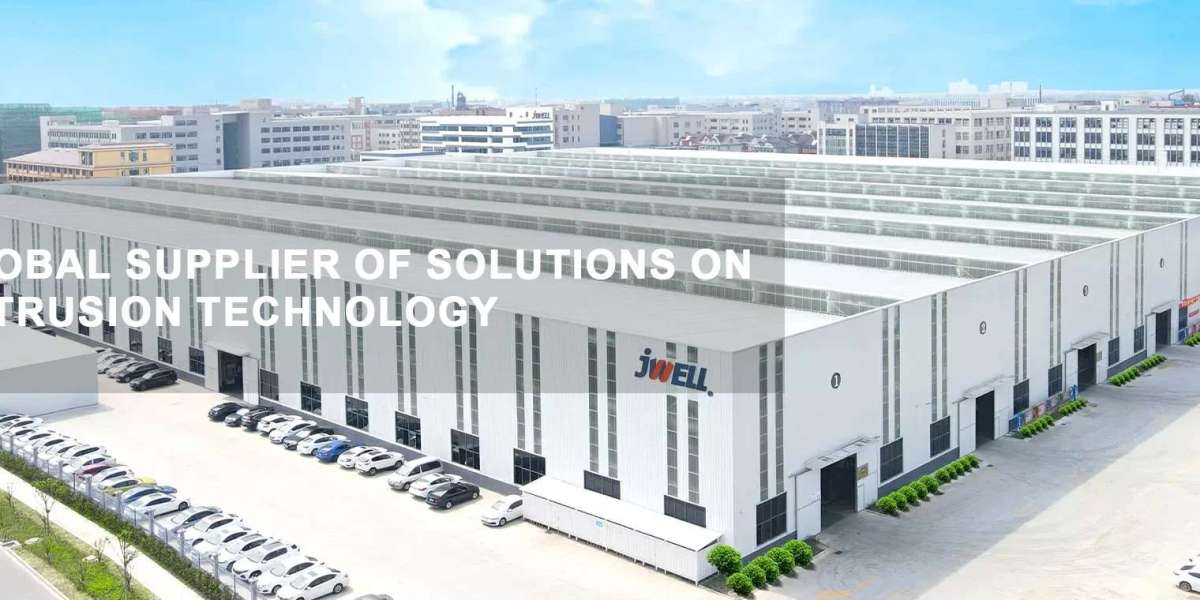In today’s fast-evolving plastic manufacturing industry, extrusion technology forms the backbone of efficient production. From simple profiles to complex sheets, extrusion lines are critical for producing high-quality plastic products with precision and speed. Among these, the Profile Extrusion Line and the Sheet Extrusion Line play pivotal roles, each catering to specific manufacturing needs while supporting a variety of applications across industries.

Understanding Profile Extrusion Line
A Profile Extrusion Line is primarily designed to produce continuous plastic profiles with consistent cross-sectional shapes. These profiles range from simple pipes and rods to intricate window frames and custom-designed sections used in construction, automotive, and consumer products. The line typically includes a high-performance extruder, a die designed for the desired profile, cooling systems, and downstream handling equipment.
One of the key advantages of a profile extrusion line is its ability to produce complex shapes with uniform dimensions. Manufacturers can customize profiles to meet industry standards, and the production process is highly scalable, supporting both small-batch and mass production requirements.
Transitioning to Sheet and Plate Extrusion
While profile extrusion focuses on specific cross-sectional shapes, the Sheet Extrusion Line and Plate Extrusion Line shift the emphasis to flat products with defined thicknesses. These lines are crucial for industries such as packaging, signage, and construction, where uniform sheet materials are required.
A Sheet Extrusion Line is designed to convert raw plastic pellets or powders into continuous flat sheets. Using a carefully engineered die, the molten plastic is spread into a flat form and cooled through rollers or water baths to achieve precise thickness and surface finish. The resulting sheets can vary in thickness, width, and color, making them highly versatile for applications ranging from industrial panels to decorative laminates.
Similarly, a Plate Extrusion Line focuses on producing thicker, more rigid sheets often used in applications requiring durability and mechanical strength. These plates are common in furniture manufacturing, construction panels, and even in specialized industrial components.
Integration with Film and Non-Woven Fabric Extrusion
Modern extrusion technologies are not limited to solid profiles and sheets. Film Extrusion Line are designed to produce thin plastic films used in packaging, agricultural covers, and disposable products. These lines use blown or cast film extrusion processes, enabling manufacturers to achieve specific thickness, transparency, and mechanical properties.
Additionally, the integration of Non-woven Fabric extrusion techniques further expands the versatility of extrusion lines. Non-woven fabrics are widely used in medical, hygiene, and filtration products. By combining profile, sheet, and film extrusion capabilities, manufacturers can adopt multi-layer processes to create composite materials that meet stringent performance requirements.
Advantages of Modern Extrusion Lines
Investing in advanced extrusion lines offers numerous benefits for plastic manufacturers:
High Efficiency: Modern extrusion lines are optimized for continuous production, reducing downtime and maximizing output.
Material Versatility: From PVC and PE to advanced polymer blends, extrusion lines can handle a wide range of plastics.
Customizability: Dies and rollers can be adjusted for different profiles, sheets, or films, catering to diverse industry needs.
Quality Consistency: Automated control systems ensure uniform thickness, dimensions, and surface quality across batches.
Sustainability: Efficient lines reduce material wastage and energy consumption, supporting eco-friendly manufacturing practices.
Applications Across Industries
The versatility of extrusion lines makes them indispensable across multiple sectors. Profile Extrusion Lines are used in building materials, automotive parts, and furniture profiles. Sheet and Plate Extrusion Line serve packaging, signage, and industrial applications. Film Extrusion Lines supply packaging films, while Non-woven Fabric Extrusion caters to hygiene, filtration, and medical industries.
This seamless integration highlights the strategic importance of extrusion technology in modern plastic manufacturing. By bridging the gap between profiles, sheets, films, and fabrics, extrusion lines enable manufacturers to innovate and diversify product offerings.
Conclusion
From Profile Extrusion Lines to Sheet Extrusion Lines, the evolution of extrusion technology has revolutionized plastic manufacturing. By offering precision, versatility, and efficiency, these lines form the backbone of modern production processes. Integrating with Film Extrusion Lines and Non-woven Fabric production, extrusion technology continues to push the boundaries of what’s possible in plastic manufacturing, empowering industries to meet growing demands with high-quality, sustainable solutions.
Whether you are producing complex profiles, durable sheets, or specialized films, understanding the capabilities and applications of modern extrusion lines is key to staying competitive in the dynamic world of plastics.



